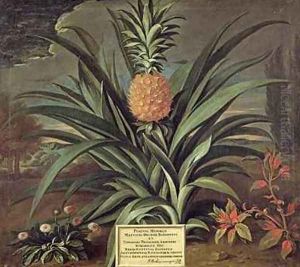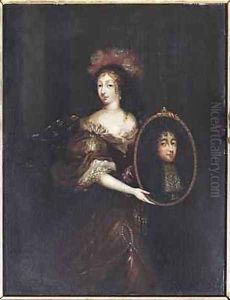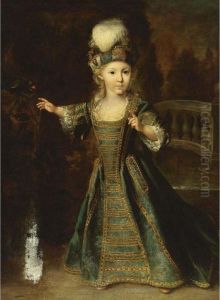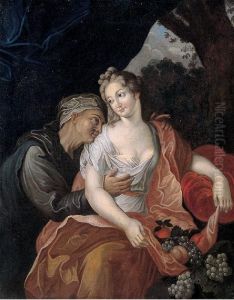Theodorus Netscher Paintings
Theodorus Netscher, born in 1661 in Heidelberg, Germany, was a notable Dutch Golden Age painter, continuing the artistic legacy established by his father, Caspar Netscher, a well-regarded portraitist and genre painter of the era. Theodorus's early life was profoundly influenced by his father's artistic environment, which exposed him to the fine nuances of painting from a young age. Following his father's death in 1684, Theodorus, along with his brother Constantijn, worked to preserve and further their father's artistic reputation, while also seeking to carve out their own niches in the art world.
After moving to Bordeaux for a period, Theodorus eventually returned to the Netherlands, where he settled in The Hague. This city, being a hub of artistic activity and the seat of the Dutch government, offered ample opportunities for a painter of Netscher's talents. His works, although often compared to his father's, display a unique blend of precision and grace, with a particular emphasis on portraits and genre scenes that capture the elegance and refined lifestyle of the Dutch elite during the late 17th and early 18th centuries.
Netscher's contributions to Dutch art during the Golden Age are characterized by his meticulous attention to detail, vibrant use of color, and the lively depiction of his subjects. His ability to capture the texture of fabrics and the subtleties of light reflects the influence of his father's technique, yet Theodorus’s paintings also convey a distinctive style that earned him recognition in his own right. Throughout his career, he managed to maintain a successful practice, receiving commissions from wealthy patrons and contributing to the cultural landscape of the Netherlands during a period of significant artistic flourishing.
Despite facing the challenge of living up to his father's legacy, Theodorus Netscher managed to establish himself as a respected artist, ensuring that the Netscher name remained synonymous with quality and elegance in Dutch painting. His death in 1728 marked the end of an era, but his works continue to be celebrated for their beauty and historical value, offering insight into the artistic and societal norms of his time.







